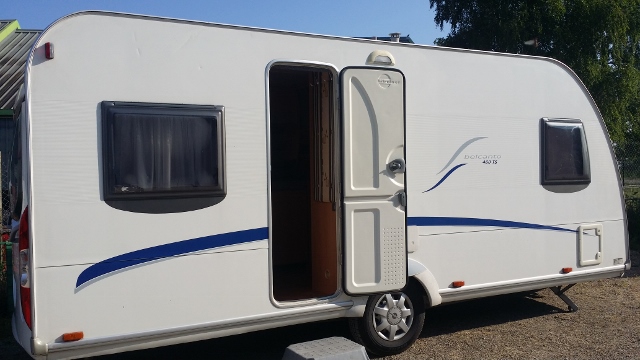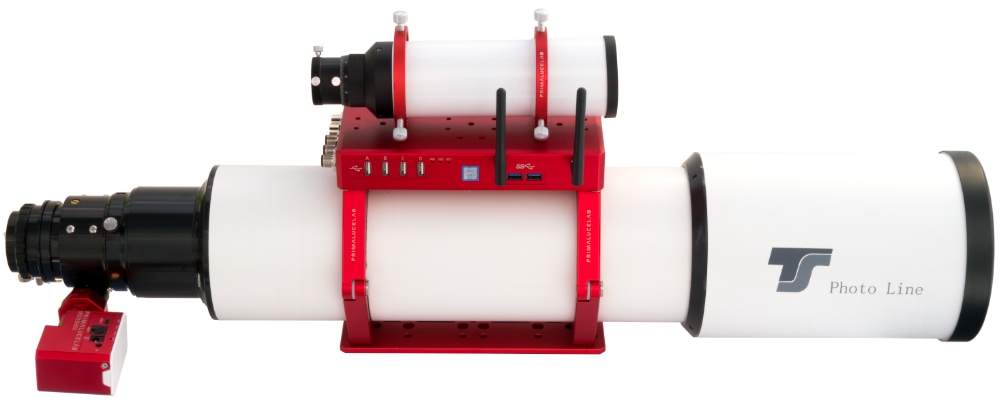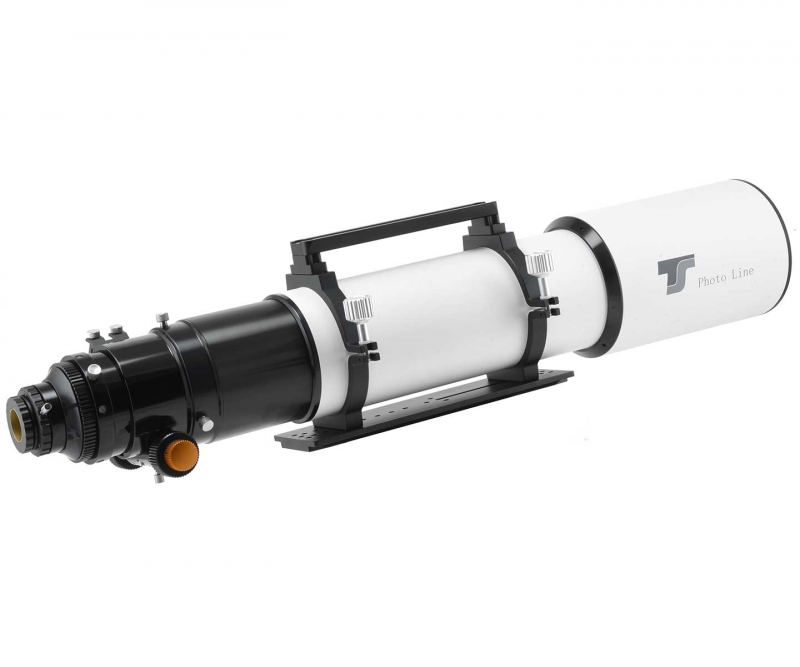
These employ 3-inch Linear Power focusers and can be supplied with dedicated field flatteners. The 100mm aperture refractor has a surprisingly low focal ratio of f/5.5 whilst that of the 120mm and 150mm is the, rather more normal, f/7.

SkyWatcher can provide their ESPRIT-100ED and ESPRIT-120ED ‘Professional’ telescopes and even have the ESPRIT 150ED in their range. Telescopes in this aperture range are now often employing triplet objectives with one element made of ED glass.
TS PHOTOLINE 130 AND ATIK 460 PRO
Skywatcher have the, excellent value, ED DS-PRO range of 100 and 120mm aperture whilst their 120 Equinox PRO employs the same optics within an enhanced tube assembly.Īltair Astro provide their Starwave 102ED and Starwave 110ED refractors also using FPL-51 glass as one element. TS-Optics CF-APO 90 mm f/6 FPL55 Triplet APO Refractor with Certificate Now we are out of the EU, these superb telescopes are likely to become more expensive. Teleskop Service have two triplet apo refractors, a 90 mm f/6 using FPL-55 and a 94mm f/5.5 which I suspect also uses FPL-55. FPL-55 is a new glass type that is now replacing FPL-53 in refractor objectives. With lesser focal ratios, such as f/5 to f/8, I would recommend those which have an ED doublet using either FPL-51 (or equivalent) or, better, FPL-53 or FPL-55 glass as one element. These range from 90mm aperture upwards and there is a very wide range available with costs ranging from a few hundred pounds up to many thousands. 97812 with its Zeiss test report showing 96.3% Strehl.
TS PHOTOLINE 130 AND ATIK 460 SERIAL
As this essay was written they had, for example, the APQ 100mm aperture, 640mm focal length telescope serial Nr. As fluorite crystal lens elements scatter no light, these telescopes are reputed to give the highest contrast images of any telescope.Ĭarl Zeiss Jena used to manufacture fluorite refractors which can be sometimes bought used from APM Telescopes. The FS60 is a small, lightweight, jewel of a telescope and ideal for taking to observe eclipses of the Sun.

Takahashi produce fluorite refractors with 60 and 76mm objectives the FS60CB and FC76DS having focal ratios of f/5.9 and f/7.5 respectively. This uses a triplet objective employing one element of FPL-53 glass and, coupled with a 2-inch star diagonal and 30mm wide field eyepiece such as the APM UW ED 30 mm eyepiece, can give a true field of view spanning 5.9 degrees across. Teleskop Service or APM Telescopes sell the TS Photoline 70mm f/6 FPL53 Triplet Apo that comes with a 2-inch rack and pinion focuser. A dedicated field flattener can be supplied for imaging use.Īt greater cost, Meade produce the ‘Series 6000’ 80mm, f/6, ED Triplet including one element of FPL-53 glass and which comes equipped with a Crayford focuser. Skywatcher produce the Esprit 80 ED PRO Triplet using an FPL-53 for one element and uses a 2.7-inch ‘Linear Power focuser’ which is an improved form of Crayford focuser. The also sell the Starwave 70ED, f/6, Travel Refractor having a 2-inch Crayford focuser. Also with a rack and pinion focuser, they sell the ‘Lightwave 80ED-R’ f/6 refractor using one element of FPL-53 glass to give enhanced colour correction. Pleasingly, both have rack and pinion focusers which are increasingly taking over from Crayford focusers. Fluorite crystal can also be employed for one element of a doublet objective to give images of exceptional quality and contrast.Īltair Astro sell ‘Lightwave’ ED refractors of 66mm and 72mm apertures each with an f/6 focal ratio that are excellent value for money. A relatively small number of refractors will use a triplet objective using either glass type as one element to give an even better corrected image but note that they will take longer to cool down to outside temperatures. They typically use FPL-51 glass as the ED element to minimise chromatic aberration but, at greater expense, can use FPL-53 glass (or now FPL-55) which will reduce chromatic aberration even further or, as often is the case, enable a telescope with a given aperture to have a shorter focal length so giving a wider field of view.

Far better are the doublet objectives that use one element of an extra-dispersive glass, termed ED objectives. Though inexpensive, I would not recommend any simple achromats for astronomical use. The first point to address is the type of objective used. These are great for viewing or imaging wide fields and I believe that every amateur astronomer should have one. I would include refractors with apertures from 60 to 85mm in the short focal length range and, as these are so popular, there is an amazing amount of choice. This is one of over 100 articles in the Author’s Astronomy Digest including two others about refractors.


 0 kommentar(er)
0 kommentar(er)
